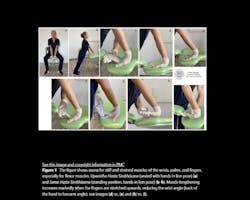The importance of yoga in dental hygiene
Yoga is known to decrease stress and promote flexibility. It originated in ancient India, including various forms like Sivananda, Viniyoga, Parinama, and more.1 Systematic reviews on the effects of yoga exercises, breathing techniques, and breathing practices note positive results when used as an adjunct to diagnosed conditions-including depression, anxiety, stress, musculoskeletal function, pain, and hypertension.2
In the world of dental hygiene, ergonomics is crucial in preventing musculoskeletal injuries, especially since many hygienists have noted pain at some point in their careers.2 The practice of proper ergonomics contributes to career longevity, career satisfaction, and decreased chronic musculoskeletal pain.3
Implementing yoga into dentistry
Research has shown that yoga can be used as a complementary or alternative form of medicine for chronic conditions; while this research does not directly pertain to dental practitioners, it can be used alongside pain management for clinicians.3
Dental hygiene curriculum uses ergonomics as a foundation for comprehensive treatment to decrease stiffness, discomfort, and pain-which may limit long-term clinical practice.2
A 2017 study utilized dental hygiene students' awareness of yoga trends and familiarity with yoga sessions to decrease episodes of musculoskeletal discomfort. This type of pain and discomfort is found in all levels of clinical careers, with more established dental practitioners particularly feeling the impact from years of clinical practice. Research conducted on the dental hygiene students found biweekly yoga sessions to be beneficial, possibly adding to career longevity.5
For dental hygienists experiencing chronic musculoskeletal pain (CMSP) and employee burnout, complementary and alternative medicine was linked to improved health and career satisfaction.3 Conventional treatments for dental practitioners have generally included physical therapy, pain management, surgery, and shifts between employment (full-time, part-time, or temporary work). CAM therapies include-but are not limited to-nutritional therapies, herbal remedies, naturopathy, chiropractic, acupuncture, massage therapy, and spiritual practices like yoga. For mid-to-late career clinicians, this may be an option to extend their time practicing.3,4 It is also a mechanism for students to enhance ergonomics already included in dental hygiene and predoctoral curriculum.2
Dental resources
Since 2020, much attention has been focused on COVID-19 and dental hygienists leaving their career due to fear, health concerns, and infection control practices within their offices.6 Those who have remained in the practice have had to deal with stress, burnout, and musculoskeletal disorders (MSDs), regardless of the stage of their career.
Yoga protocols aimed at the dental professional provide guidelines for several asanas (poses) targeted to the neck, upper back, shoulder, and wrists to prevent or treat common MSDs affecting dental practitioners.7 Additionally, the asanas are helpful for stiff and strained areas.
Ergonomics is taught to first-year dental hygiene students in laboratories as preparation for patient treatment. Maintaining musculoskeletal health and reducing risk of injury due to poor ergonomics will lead to career longevity and career satisfaction. It should be emphasized throughout the curriculum to ensure career longevity and quality of life for the individual.
Best practices for your dental team
Your dental team can benefit from education on musculoskeletal injuries. Discussions of treatment options should include conventional as well as complementary, and alternative medicine (CAM) therapies like yoga. Continued research of dental hygienists as well as the dental team in early, middle, and late career would be beneficial, serving as future research topics.
Many offices utilize lunch -and -learns as well as have CPR/BLS recertifications on site. Some offices even provide complimentary massages to the staff. An adjunct could be an introductory yoga lesson or yoga sessions geared toward the neck, shoulders, and wrists.
Editor's note: This article appeared in the October 2024 print edition of RDH magazine. Dental hygienists in North America are eligible for a complimentary print subscription. Sign up here.
References
-
Bussing A, Michalsen, A, Khalsa SB, Telles S, Sherman, K. Effects of yoga on mental and physical health: A short summary of reviews. Evid Based Complement Alternat Med. 2012:2012:165410. doi:10.1155/2012/165410
-
Hayes MJ, Smith DR, Cockrell D. An international review of musculoskeletal disorders in the dental hygiene profession. Int Dent J. 2010;60(5):343-352.
-
Chismark A, Asher G, Stein M, Tavoc T, Curran, A. Use of complementary and alternative medicine for work-related pain correlates with career satisfaction among dental hygienists. J Dent Hyg. 2011;85(4):273-284.
-
Sulenes K, Freitas J, Justice L, Colgan D, Shean M, Brems C. Underuse of yoga as a referral resource by health professions students. J Altern Complement Med. 2015;21(1):53-59. doi:10.1089/acm.2014.0217
-
Monson A, Chismark A, Cooper B, Krenik-Matejcek T. Effects of yoga on musculoskeletal pain. J Dent Hyg. 2017;91(2):15-22.
-
Jackson-Collins C, Boyd L, Jenkins S. Clinical dental hygienists' experience returning to work after closure of dental offices due to Covid-19: a qualitative study. J Dent Hyg. 2022;96(6):6-14.
-
Gandolfi M, Zamparini F, Spinelli A, Prati C. Asana for neck, shoulders, and wrists to prevent musculoskeletal disorders among dental professionals: In-office yoga protocol. J Funct Morphol Kinesiol. 2023;8(1):26. doi: 10.3390/jfmk8010026







